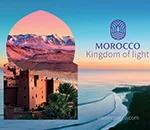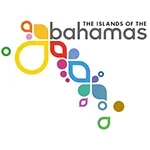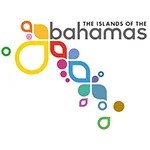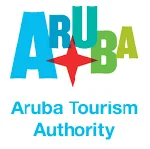 |
| Madelyn De Los Santos |
Almost every industry has been impacted following the devastation of COVID-19. According to Forbes, the travel and tourism industry has taken the biggest hit, with approximately $1 trillion in losses worldwide. From cabin crew in masks to self-check-in at airports, the pandemic has transformed the industry following our virtual standstill.
Today, as global economies continue to revive themselves, an industry that accounts for nearly 10 percent of the global GDP is bracing itself for a significant travel surge after travelers who were confined primarily to their home for almost a year are gearing up for long-awaited adventures and family reunions.
More importantly, the travel industry has faced challenges like struggling operational infrastructures, health and safety concerns, disrupted supply chains and a rapidly depleting working force. With new trends now commonplace in this new normal, renowned travel PR executives share their insights and perspective regarding the short- and long-term effects of the pandemic on the travel industry.
A short-term adaptation or a long-term transformation?
When lockdowns and travel bans became imminent, the immediate future of travel and tourism companies was in doubt. Many airlines faced heavy revenue losses due to the closure of non-essential routes, heavy reimbursements of tickets for canceled flights, and layoffs of a large number of employees. According to the International Air Transport Association, travel demand fell by 71 percent, with a net loss of $39 billion.
A changing job market
According to Louise Evins, President and CEO of Evins, one of the most significant challenges of the pandemic has been people leaving the travel industry due to layoffs or a lack of job stability. According to the U.S. Travel Association, nearly four million travel workers lost their jobs. Meanwhile, the World Travel & Tourism Control estimates around 170 million job losses. As a result, many have moved on to other industries, while some wait for the industry to open up.
Digital transformation and extensive safety protocols
One of the most notable changes in the travel industry has been technology adoption for booking, check-ins, transportation, reservations, etc. Thousands of agencies enhanced their digital presence via their websites or applications to maintain business availability allowing consumers to have an easier experience.
When it came to navigating COVID protocols around the globe, it was an overwhelming task for travel leaders. However, the industry came together with health organizations to revamp their health and safety protocols. For example, hotels, resorts, and the airline industry implemented safety and hygiene protocols around their facilities to provide consumers with a COVID-19 free experience. Evins emphasized, “safety and security are the most important thing for travelers at this moment. Hotels and resorts need full transparency when it comes to cleaning protocols and procedures; travelers want to know that the surface is cleaned of harmful bacteria and viruses.”
Diversification
One of the most significant issues the pandemic pointed out was the lack of diversity in the travel industry at all levels, from advertising to marketing strategies. Virginia Sheridan, Managing Partner at Finn Partners, said, “now is a good time to start attracting people who have a passion for travel. A lot of customers have been left out of the equation. There are BIPOC consumers who have accessibility and want to travel, but they’re not portrayed at all, so brands need to start shifting attention to those consumers to make them feel welcome.”
Over the past year, the world has seen a rise in social justice and cultural issues, which has had a lasting effect on how people travel. Michelle Kelly, Senior Vice President at Lou Hammond Group, said “we’ve seen an increased interest in how destinations are thinking about their DEI efforts. When you are welcoming people back into your destination, you want to have a really clear mission on how you’re being inclusive and how you’re authentically addressing multicultural communities.”
As far as marketing and public relations go, industry leaders need to include multicultural voices in their C-level positions and campaigns to promote BIPOC and DEI travel efforts. Brands like Noirbnb and Kid & Coe have done this by providing alternative vacation rentals for Black travelers, LGBT tourists and other diverse travel enthusiasts who want to feel like they are in a safe space. This inclusion not only helps create an authentic experience but aids in better human interaction. As far as safety is concerned, companies will have to communicate their protocols and remain transparent and honest with customers during the pandemic and beyond. The scope of these protocols needs to involve more than keeping facilities clean.
Sheridan shared that it could easily take up to a decade for the travel and tourism industry to recover fully. She claims that there’s still much confusion and concern, especially with companies rebuilding their root systems with technology and new personnel. Moreover, thousands of agencies will have to rehire and train new employees to bounce back financially and socially. Operational and customer service training is crucial in the new normal to gain back the trust of travelers.
The future of travel
The travel/tourism industry is in a unique position where there is a pent-up desire for travel, but at the same time in dire need of employees. Kelly suggests that “employers need to provide employees with proper training because the demand in travel is going to rebound. A lot of people are going to hit the road and hoteliers are going to be overwhelmed.” Apart from brands and companies providing employees with proper training, Jennifer Hawkins, CEO and President at Hawkins International, emphasizes that they need to “amp up their marketing and public relations efforts.” Since the travel industry is slowly recovering, there’s a lot of competition to be consumers’ top destination of choice.
Authenticity plays a crucial role for the future of travel and consumer's experience. The concept of Slow travel is one of the trends that have become popular due to the pandemic. Florence Quinn, President at Quinn PR, said consumers now want to travel with a purpose; slow travel allows them to connect and have an emotional impact from their experience. According to Quinn, it’s crucial to “always keep an eye on the trends, the best way to have success of pitching a story is by attaching it to a trend, no matter what climate we are in.” Keeping an eye on trends and how media is reporting to the current climate in different parts of the world is key for PR professionals to help brands have a more personal voice than a promotional one.
Cessie Cerrato, Vice President of Public Relations at Palace Resorts, believes “the future of travel will involve people making more conscious decisions with regards to how they support the local communities in the countries they vacation at. With social justice on the uprise, people are more conscious to how their travel affects these communities. That’s why communicators need to stay on top of trends and focus on the unique experiences that each destination offers to travelers.”
Following the events of 2020, it’s safe to say that the travel and tourism industry is still evolving as things get back to normal around the world. However, the situation remains fluid, meaning the travel industry has a huge responsibility to ensure that travelers and connected services are up to date with the latest developments regarding the pandemic and how these developments would affect their consumers’ experiences.
Travel stories have changed, from vast global and local adventures to nostalgic trips down memory lane. On the brighter side, the travel industry was given a chance to explore and listen to their new and old consumer, leading a whole new chapter in the travel industry and how communicators have become more important now than ever.
***
Madelyn De Los Santos is a senior at the City College of New York, majoring in public relations and advertising in the Media and Communications Arts Department. Madelyn is also the recipient of the 2021 Art Stevens PRSA-NY CCNY Scholarship and CCNY PRSSA President.


 Weber Shandwick is providing PR and marketing communications services to the Moroccan National Tourist Office in New York.
Weber Shandwick is providing PR and marketing communications services to the Moroccan National Tourist Office in New York. Finn Partners has filed its six-month contract with the Bahamas Ministry of Tourism, Investments & Aviation, which is worth $240K.
Finn Partners has filed its six-month contract with the Bahamas Ministry of Tourism, Investments & Aviation, which is worth $240K. Weber Shandwick wrapped up its work for the Ministry of Bahamas at the end of 2023.
Weber Shandwick wrapped up its work for the Ministry of Bahamas at the end of 2023. The Aruba Tourism Authority is boosting its budget 29.4 percent to $2.2M at Zeno Group, according to its 2024 contract, effective Jan. 1.
The Aruba Tourism Authority is boosting its budget 29.4 percent to $2.2M at Zeno Group, according to its 2024 contract, effective Jan. 1. As inflation continues to impact spending, consumers are revisiting their list of what they’re willing to spend more of their money on. Luckily for those in the travel industry, experiences seem to be trending up on the “splurge” list.
As inflation continues to impact spending, consumers are revisiting their list of what they’re willing to spend more of their money on. Luckily for those in the travel industry, experiences seem to be trending up on the “splurge” list. 


 Have a comment? Send it to
Have a comment? Send it to 
No comments have been submitted for this story yet.